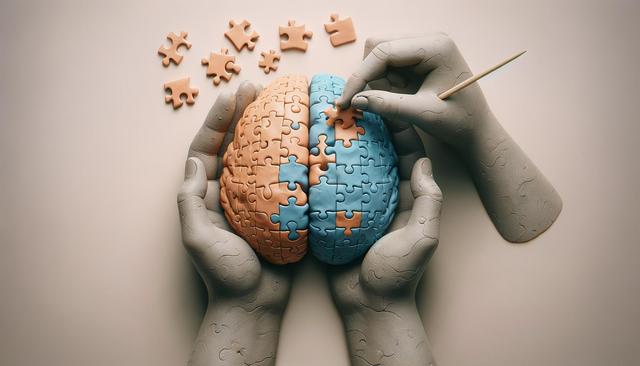Understanding the Core Principles of Autism Therapy
Autism therapy encompasses a wide variety of methods that are tailored to the unique strengths and challenges of each individual. These therapies aim to improve quality of life by focusing on essential developmental areas such as communication, behavior regulation, and social interaction. A key principle in most therapeutic approaches is early intervention, as research suggests that starting therapy during the early developmental years can lead to more meaningful progress. However, support at any age remains valuable and effective. Autism therapy often involves structured programs that are adjusted based on the needs and progress of the individual. This flexibility ensures that therapy remains relevant and supportive throughout different stages of life.
In the context of Autism Therapy {state}, professionals often collaborate with families to create personalized intervention plans. These plans typically include measurable goals and regular assessments to track progress. Therapists may also work alongside educators, medical professionals, and behavior analysts to ensure a comprehensive support system. The goal is to address not just isolated behaviors, but to support holistic development across multiple life areas.
Types of Autism Therapy Approaches
There are several well-established approaches within autism therapy, each offering different benefits depending on individual needs. Among the most widely used is Applied Behavior Analysis (ABA), which focuses on reinforcing positive behaviors and reducing behaviors that may interfere with learning. Speech and language therapy is another key approach, helping individuals improve their ability to communicate effectively, whether through verbal language, sign language, or assistive technology.
Other commonly used therapies include:
- Occupational therapy – focuses on daily living skills such as dressing, eating, and sensory integration.
- Social skills training – helps individuals understand and navigate social situations more successfully.
- Cognitive Behavioral Therapy (CBT) – used to address anxiety, depression, and emotional regulation.
In Autism Therapy {state}, treatment plans may incorporate one or more of these approaches based on thorough assessments and family input. Many programs also integrate play-based or relationship-focused interventions, which are especially effective with younger children or those who respond well to less structured environments.
Family Involvement and Community Support
Family participation is a cornerstone of effective autism therapy. Engaging parents and caregivers in the therapeutic process not only supports consistency but also empowers families to apply techniques at home. Training sessions, workshops, and regular consultations can help families better understand autism and support their loved ones more effectively. In Autism Therapy {state}, community programs often provide family-centered services that include both direct therapy and education for caregivers.
Support groups and community networks also play a vital role. They can provide emotional support, share resources, and foster a sense of belonging. Families often benefit from connecting with others who share similar experiences. Many therapy centers offer:
- Parent education sessions
- Sibling support groups
- Community outings to practice social skills
These opportunities not only reinforce therapy goals but also help reduce the sense of isolation that some families may feel.
Technological Tools and Innovations in Autism Therapy
The use of technology in autism therapy has grown significantly in recent years. From communication devices to interactive learning apps, technology can enhance engagement and facilitate learning. Augmentative and Alternative Communication (AAC) tools, for instance, support individuals who are nonverbal or have limited speech. These can include picture-based systems, voice-output devices, and tablet-based apps designed specifically for communication development.
In Autism Therapy {state}, many providers incorporate these tools into daily sessions. Therapists may use virtual reality environments to help individuals practice real-world scenarios or introduce gamified learning platforms to maintain motivation. Additionally, telehealth options have expanded access to services, particularly in rural or underserved areas. These innovations ensure that therapy remains accessible, engaging, and adaptable to individual preferences and needs.
It’s important to note that while technology can be a powerful supplement to traditional therapy, it is most effective when used under the guidance of trained professionals who can monitor progress and adjust strategies as needed.
Measuring Progress and Adapting Therapy Plans
Tracking progress is an essential part of any autism therapy program. This involves setting clear, achievable goals and using data to assess whether interventions are effective. Therapists often use behavior tracking tools, developmental checklists, and regular observational assessments to monitor improvements. Adjustments to the therapy plan are made based on these findings to ensure continued growth and relevance.
In Autism Therapy {state}, individualized progress tracking allows for a dynamic approach. Goals may be modified as a client masters certain skills or as new challenges emerge. Progress is not always linear, and therapists are trained to recognize when to adjust the pace or direction of treatment. Some common areas of progress include:
- Increased verbal or nonverbal communication
- Improved attention and task completion
- Reduction in challenging behaviors
- Greater independence in daily living activities
Parents and caregivers are typically involved in reviewing progress and setting new goals, ensuring that therapy remains a collaborative process.
Conclusion: Empowering Growth Through Individualized Support
Autism therapy is a journey shaped by individual needs, family involvement, and evidence-based practices. With a wide range of therapeutic options available, families in Autism Therapy {state} have access to resources that encourage meaningful development and lifelong learning. Whether focusing on communication, behavior, or social interaction, the key lies in a tailored approach that values progress at every step. By combining professional expertise with family collaboration and innovative tools, autism therapy continues to evolve to meet the diverse needs of those on the spectrum.

Leave a Reply